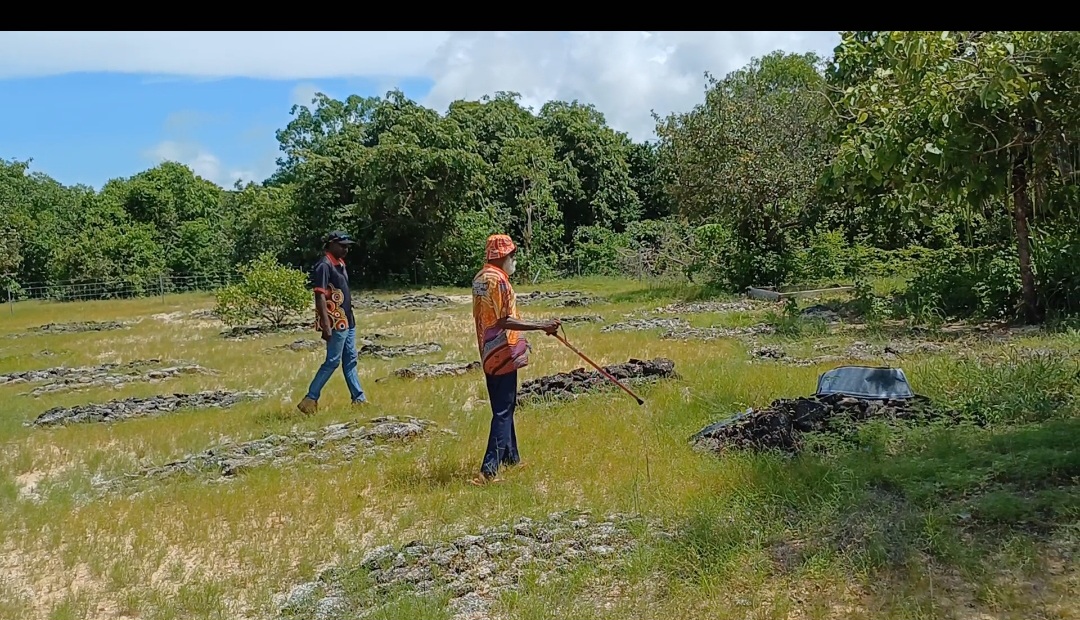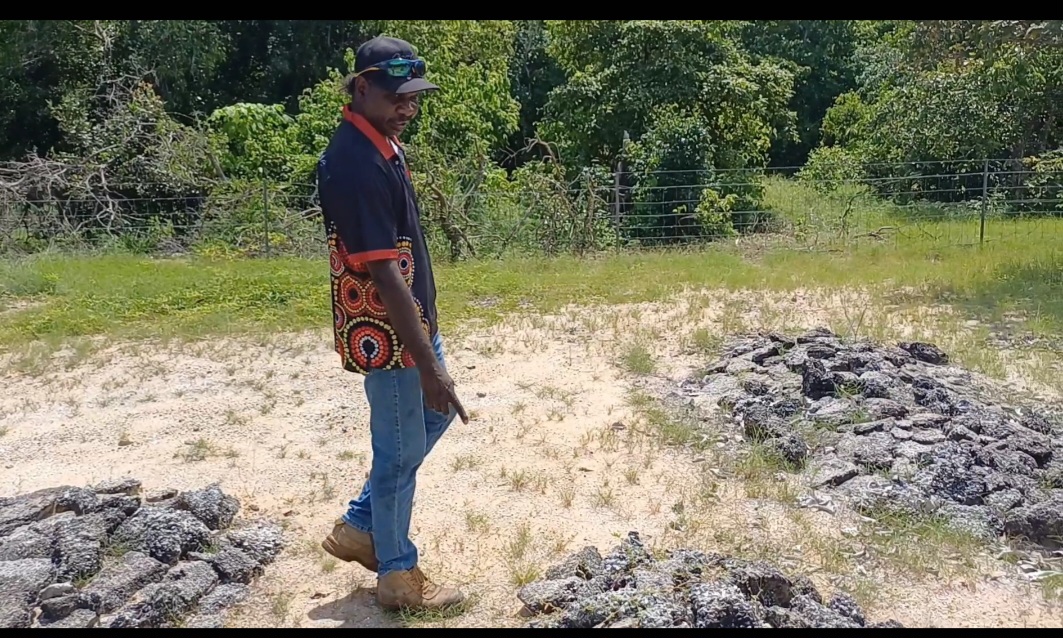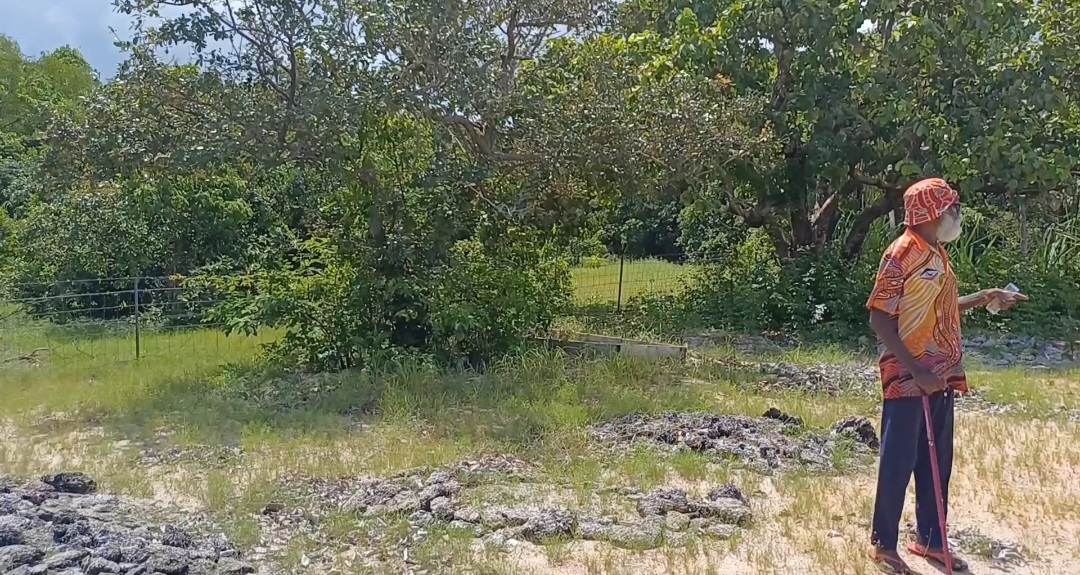
In Pormpuraaw, our local team has been leading a significant project to reconnect the community with Elders passed, their stories and histories, and ensure this knowledge is continued for generations to come.
Pormpuraaw has five overgrown cemeteries with unmarked graves within each of them.
Many were shallow graves dug with baler shells with the deceased bound in paperbark before being covered with shell grit and buried.
The local Elders are the custodians of whom is buried where, their totem, clan and ancestry however these knowledge holders are nearing the end of their life.
Restoring Knowledge with the Local Burial Grounds
The RISE Pormpuraaw team have taken on the important task of restoring and maintaining the cemeteries, as requested by the Elders.
After they clean the cemeteries including groundskeeping, the team make concrete crosses with engraved plaques to mark graves.
In future, some of these cemeteries will have a map to the graves on a big board with a table and benches for resting.
This project holds special significance for one of our team Supervisors, Darren. He carries a photo of his grandmother with him. He knew which cemetery his grandmother was buried in but not which grave.
In March, Syd Bruce, an Elder, returned from Cairns and showed him exactly where she was buried.
With this project, we hope that others like Darren can know where their ancestors are buried and have this marked long into the future.
Using Drone Mapping for Future Education and Storytelling
RISE Pormpuraaw Manager, Todd Sandes, is taking this project to the next level using drone technology.
He has been guiding the team to create 3D mapping of the cemeteries. This provides footage of the grave locations with information about the people buried there and their history added in the video editing stage.
The future vision is for an interactive experience where users can move around the map, clicking on sites to open up pictures, stories and ancestral history.
The stories of those laid to rest include the brutal actions of colonisation including the forced, 3-day manacled marches from the tin shed watch house in Pormpuraaw (still there to this day) to the courthouse in Coen. The accused were either convicted and sent to Palm Island or acquitted and left to find their own way home.
For now, Todd and the team are completing the video and photography, and organising the footage chronologically.
Todd is working with the Kowanyama Musuem, the Cairns Museum Research Department and the James Cook University Archaeology and Anthropology Departments to gain guidance and advice, borrow equipment and access local histories these institutions hold.

